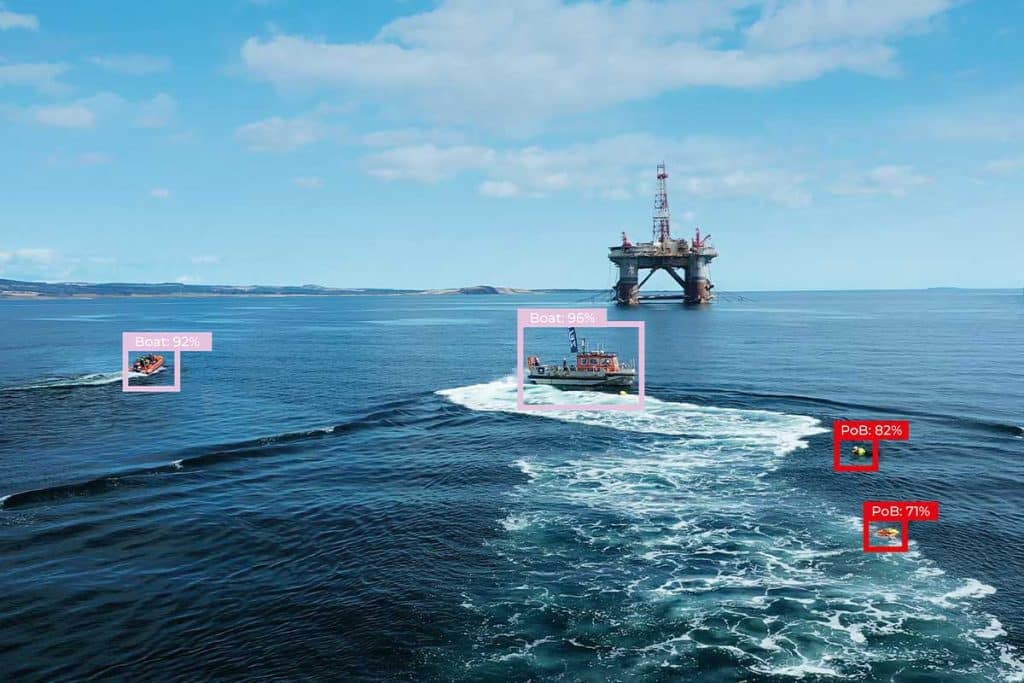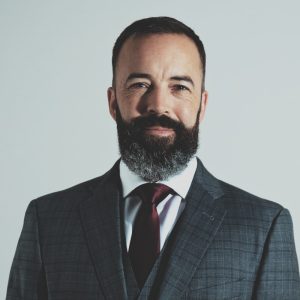Commander Matt Mitchell, a former USCG Officer, is determined to ensure all Search and Rescue (SAR) authorities worldwide adopt Zelim’s ZOE Intelligent Detection System to save more lives at sea.
For those tasked with SAR operations, the sobering reality is that current technologies are not up to the task. The use of older sensor technologies, inconsistencies in human searching, and a lack of fully integrated planning tools have all contributed to a grim statistic—as few as 19% of SAR responses involving persons in the water result in a life saved.
The Challenges Facing Search and Rescue
It is a problem that has plagued the maritime industry for decades, says Matthew Mitchell, a former US Coast Guard officer. “The core challenge we face is that search and rescue authorities simply don’t have the tools to detect and track persons in the water effectively.”
During his 20-year career with the US Coast Guard, Mitchell oversaw the development of the service’s search and rescue planning systems, giving him a unique perspective on the industry’s longstanding struggles. “Out of the 20 different sensor types used by the Coast Guard today, we can only reliably integrate three of them into effective search plans,” he says. “The performance of new sensor technology in different environments, with different search objects, is just not well understood.”
The lack of understanding of sensor capabilities is compounded by the inherent variability of human observers, which remains the primary detection method during SAR operations. “We’ve poured millions into studying the capabilities of the human eye, but it’s still an inconsistent and unreliable tool,” Mitchell laments. “When you couple that with the challenges of operating in rough seas, with poor visibility, and other harsh conditions, you end up with a recipe for disaster.”
Real-World Consequences of Ineffective SAR Methods
The tragic consequences of these limitations are evident in real-world incidents. Mitchell cites an event in March 2009, when a four-person crew capsized 70 miles off the US coast. “Rescue teams flew over them numerous times, but they couldn’t detect the survivors in the water,” he recounts. “Three of the four people ended up perishing, with only one survivor left to tell the harrowing tale.”
Stories like this drove Mitchell to leave the US Coast Guard and join Zelim, a company he first encountered at a maritime safety conference in the UK.
How ZOE is Revolutionising SAR
Now serving as Director of Search and Rescue for Zelim’s US and Asia-Pacific operations, Mitchell believes the widespread adoption of Zelim’s AI-powered ZOE detection and tracking system will change how persons in water are detected, ultimately saving more lives at sea. “I was immediately impressed by the passion and vision of Zelim’s founders, Sam Mayall and Doug Lothian, as well as the calibre of the team they were assembling,” he recalls. “And when I learned about their breakthrough technology, ZOE, I knew I had to be a part of it.”
ZOE is an AI-powered detection system representing a quantum leap forward in man overboard monitoring and response. Unlike traditional sensor systems that rely on human observation, ZOE uses advanced computer vision and machine learning algorithms to continuously scan the water, instantly detecting signs of a person in distress.
It also differentiates persons in water from other objects, such as:
- Seabirds
- Buoys
- Small craft
- Water reflections
- Flotsam and jetsam
“ZOE doesn’t get tired, it doesn’t get distracted, and it doesn’t have the inherent variability of a human searcher,” Mitchell explains. “It can detect a person in the water with pinpoint accuracy, even in challenging conditions like rough seas or when visibility is poor. And crucially, it can do this 24/7, providing a constant vigilance that isn’t possible with other systems that rely on human-in-the-loop observation.”
Rescue Precision and Man Overboard Detection
ZOE’s capabilities extend beyond active searching—it is also designed to monitor for persons falling overboard in real time. “With ZOE, we know the precise time and location of the man overboard event,” Mitchell says. “That gives us a fighting chance to get there in time and make the rescue. Time is a crucially important factor in the safe and successful recovery of man overboard casualties.” ZOE can be fully integrated with advanced planning and response tools, allowing SAR teams to deploy assets to the exact location rapidly.
Mitchell recalls another tragic case in which a Ukrainian sailor went overboard but was not detected for nearly six hours. “By that point, the search area was so massive that the chances of finding him alive were almost impossible,” he says. “With ZOE, we could have pinpointed the exact location and had search assets on the scene much more rapidly, dramatically increasing the chances of survival.”
US Coast Guard Validation of ZOE
Recognising ZOE’s potential impact, Mitchell facilitated a cooperative research and development agreement between Zelim and the US Coast Guard to test and validate its capabilities. “The US Coast Guard, like many other agencies, was struggling to integrate modern sensor technologies into their planning tools,” Mitchell says. “The Zelim system represented a solution to that problem, and I was determined to prove its worth.”
Through this partnership, extensive data collection, simulations, and algorithm refinements ensured that ZOE could seamlessly integrate with USCG systems and workflows. “The feedback from the US Coast Guard was overwhelmingly positive,” Mitchell says. “They recognised that ZOE’s precision detection and rapid response capabilities could save countless lives at sea.”
Driving Global Adoption of ZOE
With the US Coast Guard’s endorsement, Mitchell is now leading efforts to drive adoption beyond the US. “My goal is to get ZOE into the hands of search and rescue authorities worldwide,” he declares. “This technology has the potential to revolutionise the industry, and I’m determined to make that a reality.”
Zelim is establishing a dedicated presence in the US, recruiting a team of experts to engage with government agencies, maritime operators, and key stakeholders. “We’ll need a physical office, likely in the Maryland or Virginia area, to support the growing number of US-based contracts and operations,” he explains. “And it’s not just about the technical side—we also need to have the right people in place to effectively communicate the value of ZOE to a wide range of potential customers.”
As the maritime industry continues to face safety challenges, Mitchell is confident that Zelim’s technology will redefine search and rescue operations. “This is the biggest breakthrough in search and rescue since the advent of search theory back in 1946,” he declares. “ZOE has the potential to completely transform how we detect, respond to, and ultimately save the lives of those who find themselves in peril on the open water. It’s a game-changer, plain and simple.”
Watch ZOE in action


